Few things in motorsport are as thrilling as watching iconic racing cars dominate the track. These machines pushed the limits of speed and technology, leaving a lasting impression on fans and drivers alike. However, even the greatest cars eventually retire, leaving behind a legacy that lives on in racing history. Here are 20 of the most unforgettable racing cars that have stepped off the track for good, but their stories continue to inspire.
Contents
McLaren MP4/4
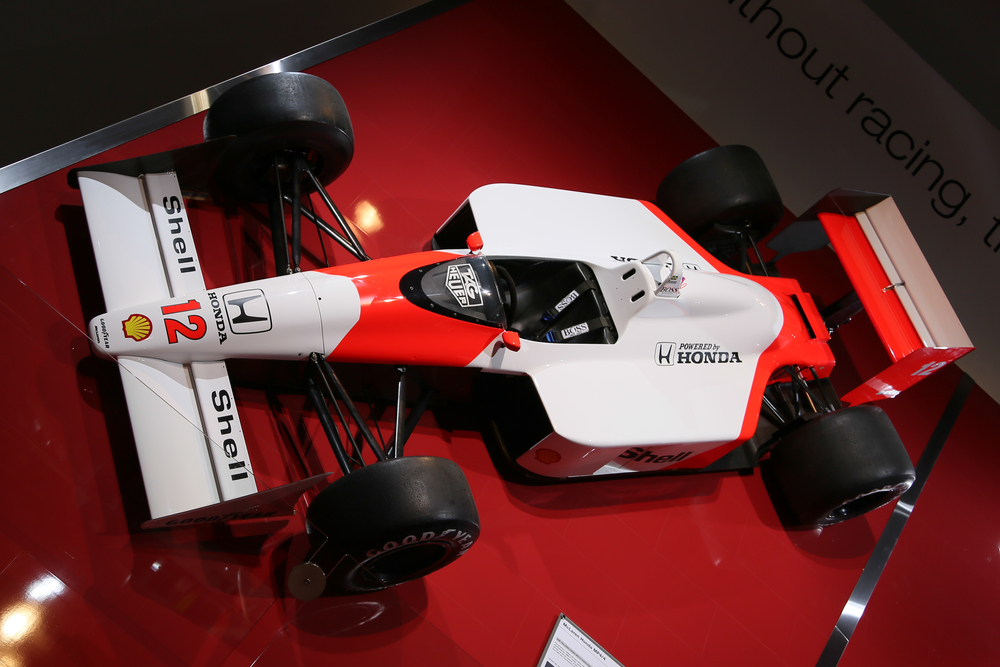
The McLaren MP4/4 is considered one of the most dominant Formula 1 cars of all time, winning 15 out of 16 races during the 1988 season. Driven by legends Ayrton Senna and Alain Prost, this car boasted a Honda RA168E 1.5-liter turbocharged V6 engine. Its low-slung design, paired with exceptional aerodynamic efficiency, made it virtually untouchable on the track. The MP4/4’s dominance sealed its place in racing history, making it a memorable symbol of McLaren’s peak.
Porsche 917

The Porsche 917 is a legendary endurance racing car, best known for its remarkable performance at the 24 Hours of Le Mans. With a 4.5 to 6.6-liter flat-12 engine, it delivered extreme power and speed, winning Le Mans in 1970 and 1971. Its iconic design and engineering breakthroughs, including extensive use of lightweight materials, made it one of the fastest and most memorable race cars of its time. The 917 cemented Porsche’s legacy in endurance racing.
Ferrari F2004

The Ferrari F2004 was one of the most successful Formula 1 cars, delivering Michael Schumacher’s seventh and final World Championship in 2004. Powered by a 3.0-liter V10 engine, it set several lap records, many of which stood for years. Its unparalleled reliability and aerodynamic prowess made it a force to be reckoned with. The F2004 symbolizes Ferrari’s dominance in the early 2000s and remains an iconic symbol of Schumacher’s legacy.
Audi R18 e-tron quattro

Audi’s R18 e-tron quattro revolutionized endurance racing with its hybrid technology, combining a turbocharged V6 diesel engine with electric motors. This car dominated the 24 Hours of Le Mans, securing wins in 2012, 2013, and 2014. Its advanced aerodynamics and energy recovery systems set new standards for fuel efficiency and performance in motorsport. The R18 e-tron quattro showcased Audi’s commitment to innovation in racing.
Lotus 72

The Lotus 72 is widely regarded as one of the most innovative Formula 1 cars ever made. It introduced groundbreaking features such as wedge-shaped aerodynamics, side-mounted radiators, and inboard brakes. Powered by a Cosworth DFV V8 engine, the Lotus 72 won multiple championships between 1970 and 1972. Its design principles influenced F1 car development for decades, making it a true icon of racing history.
Mazda 787B

The Mazda 787B made history by becoming the only car with a rotary engine to win the 24 Hours of Le Mans, achieving this feat in 1991. Powered by a 2.6-liter four-rotor Wankel engine, it produced a distinctive high-pitched scream and delivered exceptional performance. The 787B’s innovative engine and lightweight carbon fiber chassis made it a standout in endurance racing. Its victory remains a historic moment for both Mazda and rotary engine technology.
Ford GT40

The Ford GT40 was developed to end Ferrari’s dominance at Le Mans, and it succeeded, winning the race four consecutive times from 1966 to 1969. Powered by a 7.0-liter V8 engine, it was designed for both speed and endurance. The GT40’s victories are legendary, especially its dramatic 1-2-3 finish in 1966. This car not only became a symbol of American racing prowess but also left a lasting legacy in motorsport history.
Lancia Stratos

The Lancia Stratos is one of the most iconic rally cars ever built, claiming three World Rally Championships from 1974 to 1976. It featured a Ferrari-derived 2.4-liter V6 engine and a unique wedge-shaped design optimized for high performance in rough terrain. Its agility and power made it a formidable competitor in rally racing. The Stratos remains a symbol of Lancia’s dominance in the sport and a favorite among rally enthusiasts.
Williams FW14B

The Williams FW14B, driven by Nigel Mansell in 1992, was one of the most technologically advanced Formula 1 cars of its time. It featured active suspension, traction control, and a semi-automatic gearbox, all powered by a Renault V10 engine. These innovations helped Mansell dominate the 1992 season, securing both the Drivers’ and Constructors’ Championships. The FW14B set the standard for future F1 cars with its groundbreaking technology.
Nissan R390 GT1
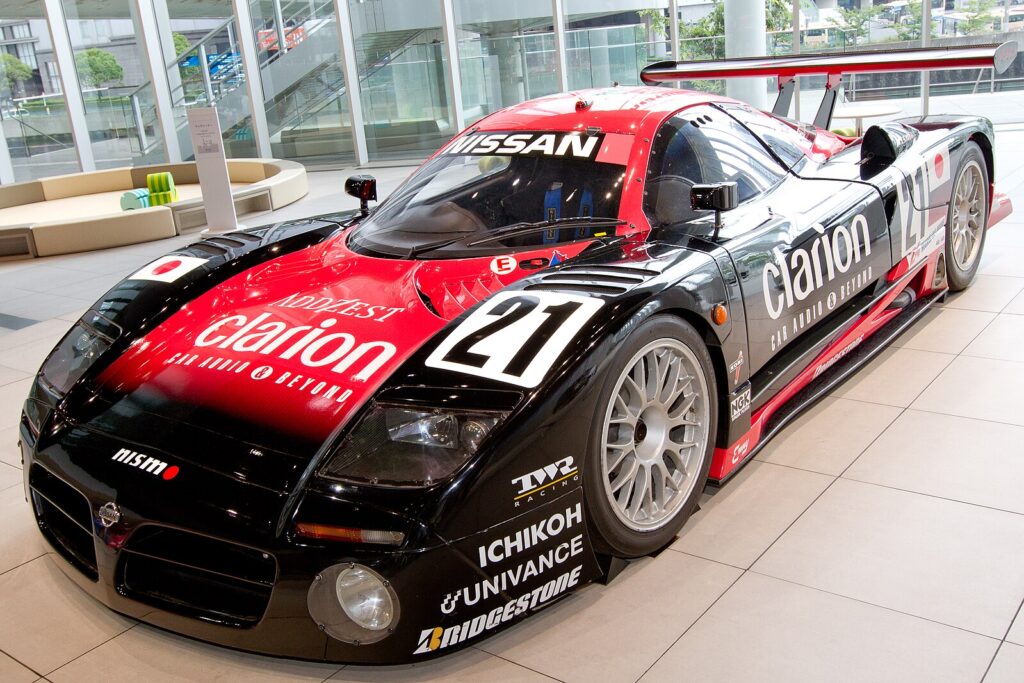
The Nissan R390 GT1 was designed specifically to compete at Le Mans in the late 1990s. With a sleek, aerodynamic design and a twin-turbocharged 3.5-liter V8 engine, it was capable of reaching speeds over 220 mph. While it didn’t secure a victory, its top performance in 1998, finishing third overall, left an impression. The R390 GT1 showcased Nissan’s ability to produce high-performance racing machines that pushed the limits of technology.
Peugeot 905

The Peugeot 905 was a Group C racing car that dominated the 24 Hours of Le Mans in the early 1990s, winning the race in 1992 and 1993. Powered by a 3.5-liter V10 engine, the 905 was known for its exceptional speed and aerodynamic efficiency. Its success at Le Mans helped solidify Peugeot’s place in motorsport history. The 905’s triumphs in endurance racing are still celebrated as a pinnacle of engineering excellence.
BMW M3 E30
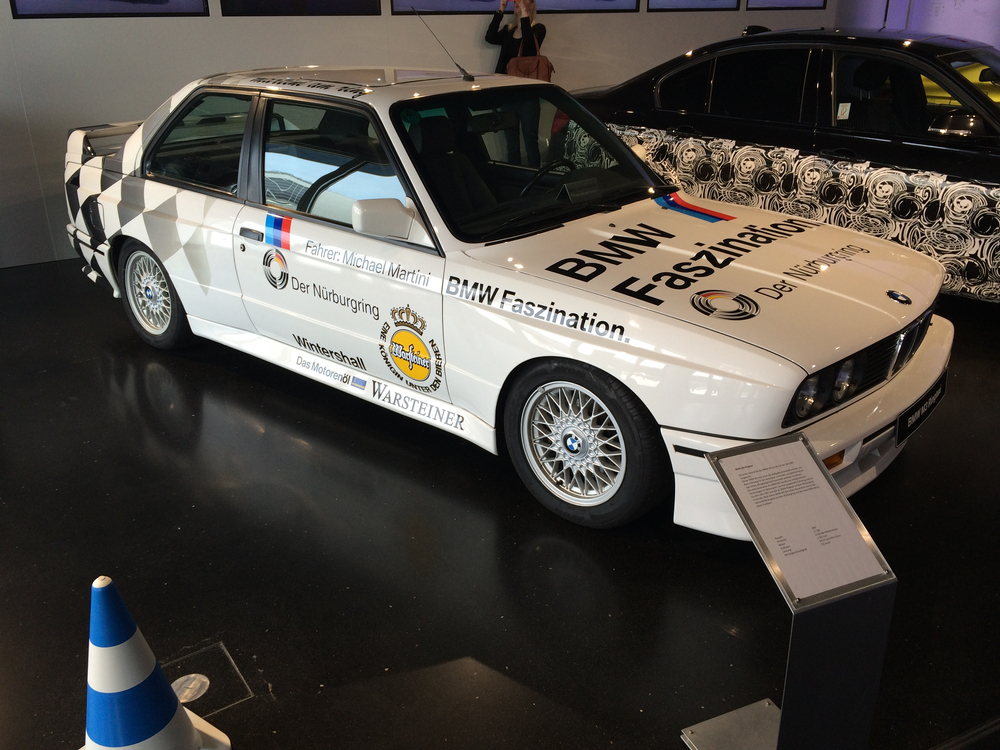
The BMW M3 E30 is an icon of touring car racing, particularly in the Deutsche Tourenwagen Meisterschaft (DTM). Powered by a high-revving 2.3-liter four-cylinder engine, it was known for its agility, balance, and reliability. The M3 E30’s success in touring car championships across Europe solidified its reputation as one of the greatest racing cars ever. Its motorsport legacy continues to influence modern performance cars.
Mercedes-Benz CLK GTR

The Mercedes-Benz CLK GTR was a beast on the track, designed to compete in the FIA GT Championship. Powered by a 6.9-liter V12 engine, it was capable of producing over 600 horsepower. Its aggressive aerodynamic design and sheer power made it a dominant force in the late 1990s. The CLK GTR’s success in GT racing, along with its road-going versions, helped solidify Mercedes-Benz’s reputation in motorsports.
Renault RS01
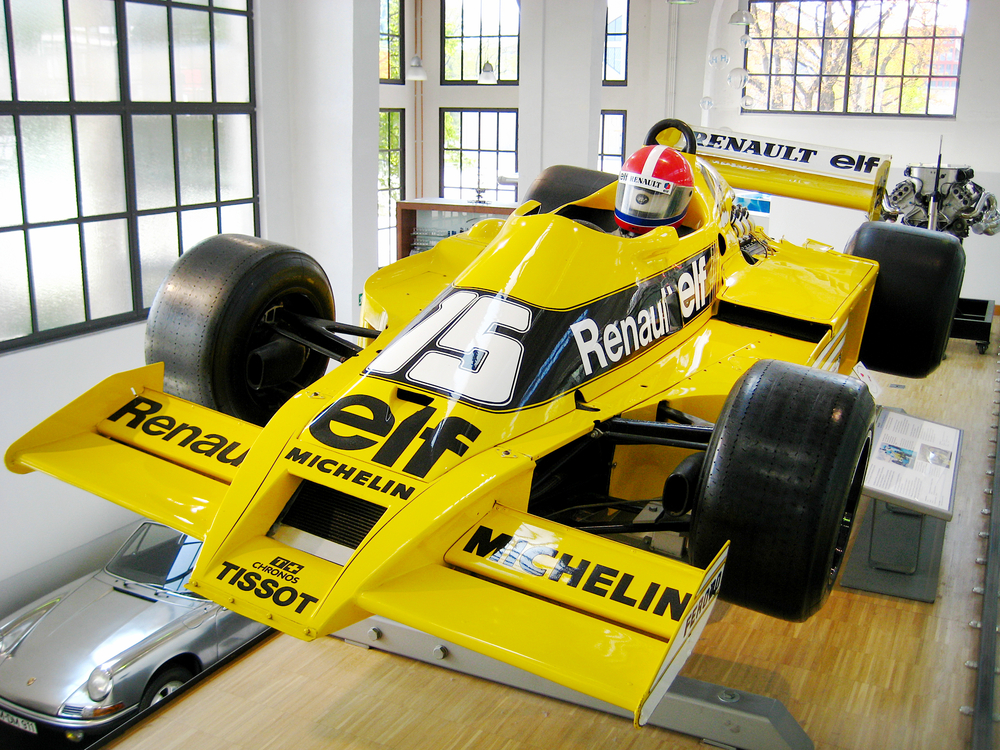
The Renault RS01 made history in Formula 1 as the first car to use a turbocharged engine, changing the landscape of F1 racing forever. Powered by a 1.5-liter turbocharged V6, the RS01 faced many reliability issues initially but eventually led to Renault’s future dominance in the sport. This car set the stage for the turbo era in Formula 1, making it a significant piece of motorsport history.
Toyota TS050 Hybrid

The Toyota TS050 Hybrid redefined endurance racing with its hybrid powertrain, combining a 2.4-liter twin-turbo V6 engine with electric motors. Dominating Le Mans from 2018 to 2020, it showcased Toyota’s technological prowess and commitment to efficiency without sacrificing performance. The TS050 Hybrid’s success marked a new era for hybrid racing cars and solidified Toyota’s place in Le Mans history.
Chevrolet Corvette C6.R

The Chevrolet Corvette C6.R was a formidable competitor in GT racing, particularly in the American Le Mans Series and at Le Mans itself. Powered by a 7.0-liter V8 engine, it became known for its power, reliability, and exceptional handling. The C6.R’s success on the track, including multiple class victories at Le Mans, helped solidify Corvette’s reputation in the world of endurance racing.
Brabham BT46B “Fan Car”

The Brabham BT46B, also known as the “Fan Car,” was one of the most innovative and controversial Formula 1 cars. Powered by a 3.0-liter V12 engine, it featured a large fan at the rear to improve downforce by extracting air from beneath the car. Although it won its debut race in 1978, the car was banned due to its unique design. The BT46B remains a symbol of out-of-the-box thinking in motorsports.
Jaguar XJR-9

The Jaguar XJR-9 is best known for its victory at the 24 Hours of Le Mans in 1988. Powered by a 7.0-liter V12 engine, it was designed for endurance racing and achieved speeds in excess of 240 mph. The XJR-9’s success brought Jaguar back to the forefront of international motorsport, making it one of the most iconic endurance racing cars of its era.
Ford Escort RS Cosworth

The Ford Escort RS Cosworth became a legend in both rallying and touring car racing. Featuring a turbocharged 2.0-liter inline-four engine and all-wheel drive, it was renowned for its speed, handling, and rally pedigree. The car’s iconic “whale tail” spoiler and success in motorsport, including wins in WRC, made it a fan favorite and a key part of Ford’s racing heritage.
Lotus 49
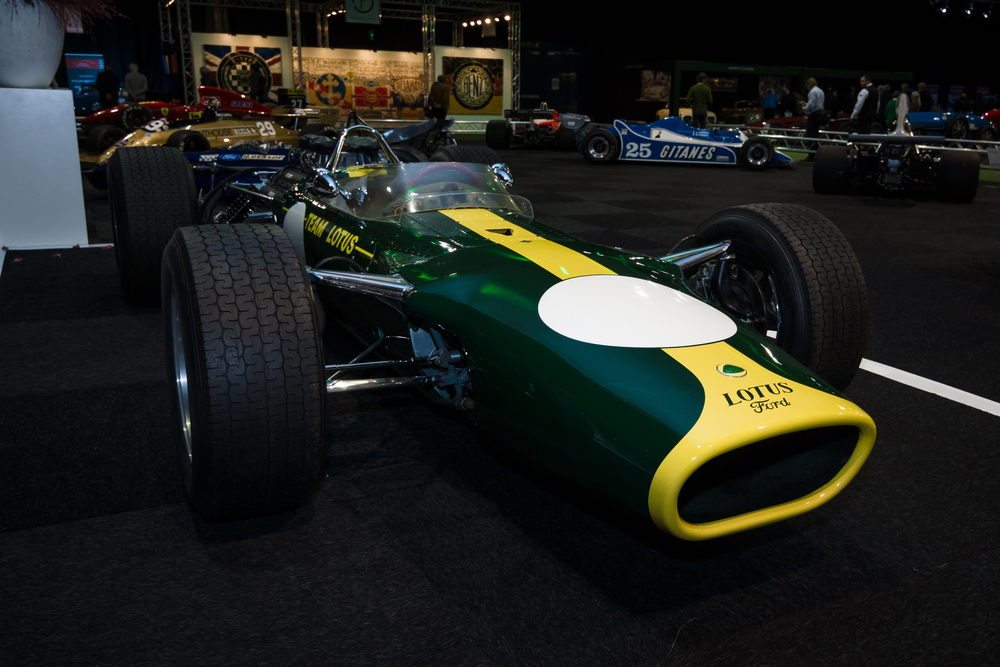
The Lotus 49 revolutionized Formula 1 by introducing the Cosworth DFV engine as a structural part of the car’s chassis. Powered by a 3.0-liter V8, it won multiple championships in the late 1960s, driven by greats like Jim Clark and Graham Hill. The Lotus 49’s innovative engineering changed the way F1 cars were built, cementing its place as an all-time classic.
This article originally appeared in MyCarMakesNoise.
More from MyCarMakesNoise
25 Groundbreaking EVs That Revolutionized Sustainable Driving
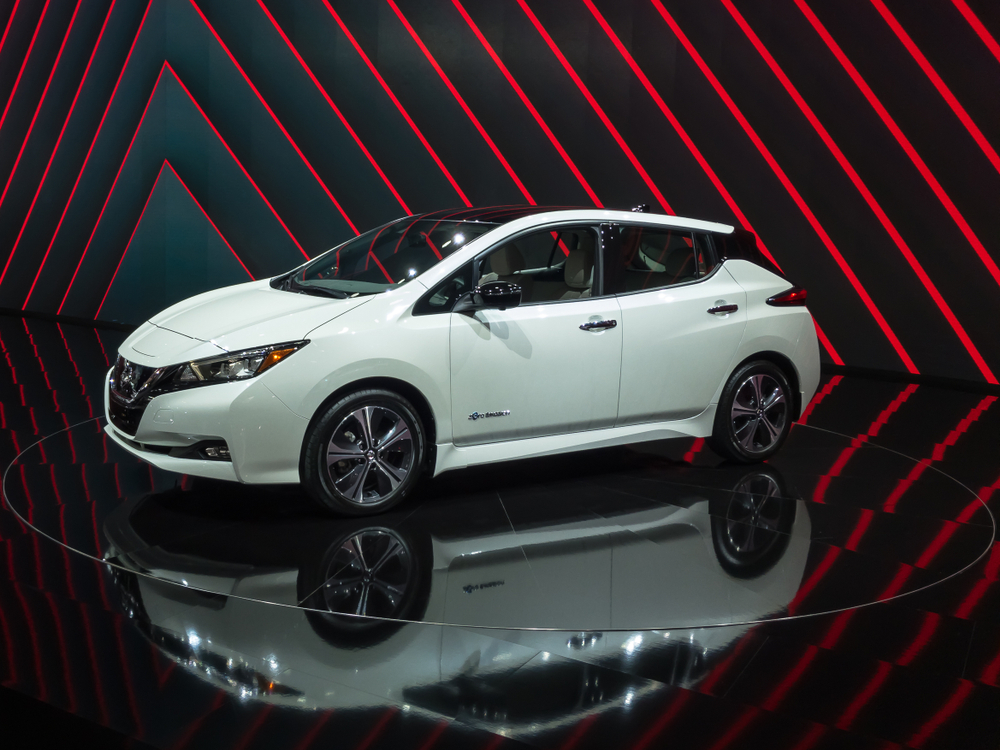
Electric vehicles (EVs) have revolutionized the way we think about transportation, offering a greener alternative to traditional gas-powered cars. In this article, we explore 25 EVs that have paved the way for sustainable driving. Read More
20 High-Speed Trains Revolutionizing Global Transit

Discover the world’s fastest trains that redefine travel as we know it. From cutting-edge technology to breathtaking speeds, these marvels of engineering are revolutionizing transportation. Read More
20 Must-See Luxury Yachts for the Ultimate Seafaring Journey

Embarking on a seafaring adventure aboard a luxury yacht is the epitome of elegance and relaxation. Whether you’re seeking serene ocean escapes or thrilling voyages, these top 20 luxury yachts offer unparalleled comfort, cutting-edge design, and world-class amenities. Read More














